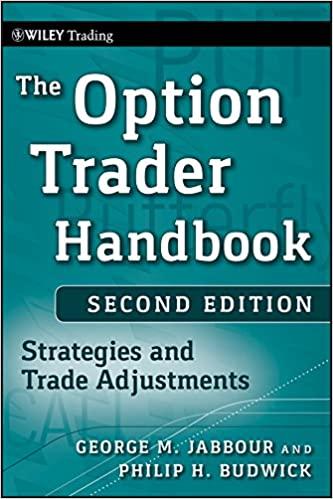Question
You are evaluating the HomeNet project under the following assumptions: Sales of 50,000 units in year 1 increasing by 52,000 units per year over the
You are evaluating the HomeNet project under the following assumptions: Sales of 50,000 units in year 1 increasing by 52,000 units per year over the life of the project, a year 1 sales price of $260/unit, decreasing by 9% annually and a year 1 cost of $120/unit decreasing by 20% annually. In addition, new tax laws allow you to depreciate the equipment, costing $7.5 million, over three years using straight-line depreciation. Research and development expenditures total $15 million in year 0 and selling, general, and administrative expenses are $2.8 million per year (assuming there is no cannibalization). Under these assumptions the unlevered net income is shown in the table:
Suppose that HomeNet will have no incremental cash or inventory requirements (products will be shipped directly from the contract manufacturer to customers). However, receivables related to HomeNet are expected to account for 15% of annual sales, and payables are expected to be 15% of the annual cost of goods sold. a. Calculate HomeNet's net working capital requirements (that is, reproduce Table 8.4 under the assumptions given)
| HomeNets Net Working Capital Requirements | ||||||||
| Year | 0 | 1 | 2 | 3 | 4 | 5 | ||
| Net Working Capital Forecast ($000) | ||||||||
| 1 | Cash Requirements | - | - | - | - | - | - | |
| 2 | Inventory | - | - | - | - | - | - | |
| 3 | Receivables (15% of sales) | - | 3525 | 3525 | 3525 | 3525 | 3525 | |
| 4 | Payable (15% of COGS) | - | (1,425) | (1,425) | (1,425) | (1,425) | (1,425) | |
| 5 | Net Working Capital | - | 2100 | 2100 | 2100 | 2100 | 2100 |
A. Calculate HomeNet's net working capital requirements (that is, reproduce Table 8.4 under the assumptions given).
The net working capital for year 1 is $ ___ (Round to the nearest thousand dollars.) The net working capital for year 2 is $ ___ (Round to the nearest thousand dollars.) The net working capital for year 3 is $ ___ (Round to the nearest thousand dollars.) The net working capital for year 4 is $ ___ (Round to the nearest thousand dollars.) The net working capital for year 5 is $ ___ (Round to the nearest thousand dollars.) b. Calculate HomeNet's FCF (that is, reproduce Table 8.3 under the same assumptions)
| Calculation of HomeNets Free Cash Flow (Including Cannibalization and Lost Rent) | ||||||||
| Year | 0 | 1 | 2 | 3 | 4 | 5 | ||
| Incremental Earnings Forcast ($000) | ||||||||
| 1 | Sales | - | 23000 | 23000 | 23000 | 23000 | - | |
| 2 | Cost of Goods Sold | - | (9,500) | (9,500) | (9,500) | (9,500) | - | |
| 3 | Gross Profits | - | 14000 | 14000 | 14000 | 14000 | 14000 | |
| 4 | Selling, General, and Administrative | - | (3,000) | (3,000) | (3,000) | (3,000) | - | |
| 5 | Research and Development | (15,000) | - | - | - | - | - | |
| 6 | Depreciation | - | (1,500) | (1,500) | (1,500) | (1,500) | (1,500) | |
| 7 | EBIT | (15,000) | 9500 | 9500 | 9500 | 9500 | (1,500) | |
| 8 | Income Tax at 40% | 6000 | (3,800) | (3,800) | (3,800) | (3,800) | 600 | |
| 9 | Unlevered Net Income | (9,000) | 5700 | 5700 | 5700 | 5700 | -900 | |
| Free Cash Flow (000s) | ||||||||
| 10 | Plus: Depreciation | - | 1500 | 1500 | 1500 | 1500 | 1500 | |
| 11 | Less: Capital Expenditures | (7,500) | - | - | - | - | - | |
| 12 | Less: Increases in NWC | - | (2,100) | (2,100) | (2,100) | (2,100) | (2,100) | |
| 13 | Free Cash Flow | (16,500) | 5100 | 7200 | 7200 | 7200 | 2700 |
b. Calculate HomeNet's FCF (that is, reproduce Table 8.3 under the same assumptions).
The free cash flow for year 0 is $ ____ (Round to the nearest thousand dollars.) The free cash flow for year 1 is $ ____ (Round to the nearest thousand dollars.) The free cash flow for year 2 is $ ____ (Round to the nearest thousand dollars.) The free cash flow for year 3 is $ ____ (Round to the nearest thousand dollars.) The free cash flow for year 4 is $ ____ (Round to the nearest thousand dollars.) The free cash flow for year 5 is $ ____ (Round to the nearest thousand dollars.)
Step by Step Solution
There are 3 Steps involved in it
Step: 1

Get Instant Access to Expert-Tailored Solutions
See step-by-step solutions with expert insights and AI powered tools for academic success
Step: 2

Step: 3

Ace Your Homework with AI
Get the answers you need in no time with our AI-driven, step-by-step assistance
Get Started


